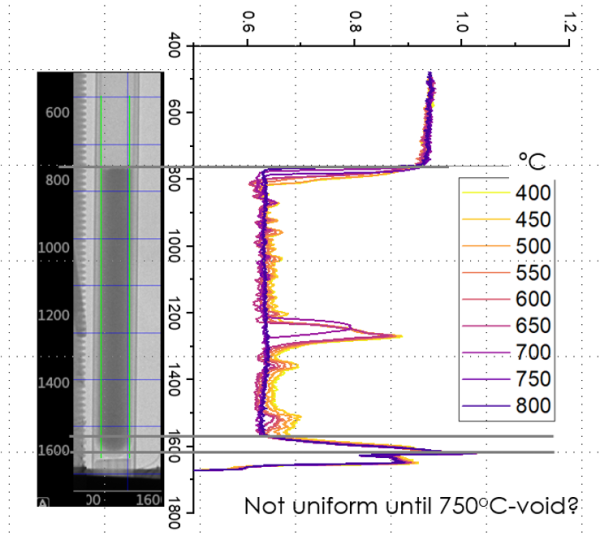Thermophysics Imaging of Molten Actinide/Alkali Salts

Scientific Achievement
Accurate density profiles were obtained in molten sodium, magnesium, potassium, and uranium chloride salt mixtures as function of temperature, revealing the formation of voids and surface wetting of the quartz tube containment.
Significance and Impact
The work establishes neutron radiography as viable method for accurately determining density profiles in actinide/alkali halide blends, which is essential for understanding thermophysical properties in molten salt nuclear reactors and third generation solar energy storage.
Research Details
- Measured densities of single salts and binary blends are in good agreement with estimates from Redlich-Kister modeling.
- UCl3−NaCl−KCl ternary mixture deviates from model estimate and suggests void formation.
- The radiographs also provide contact angles, quantifying molten salt wetting of the quartz containment.
“Density Measurements of Various Molten Sodium, Magnesium, Potassium, and Uranium Chloride Salt Compositions Using Neutron Imaging”
Jisue Moon, Hunter Andrews, Can Agca, Jean-Christophe Bilheux, Alexander Braatz, Abbey McAlister, Joanna McFarlane, Jake McMurray, Kevin Robb, and Yuxuan Zhang,
Industrial & Engineering Chemistry Research 61, 17665–17673 (2022). DOI: https://doi.org/10.1021/acs.iecr.2c02967




